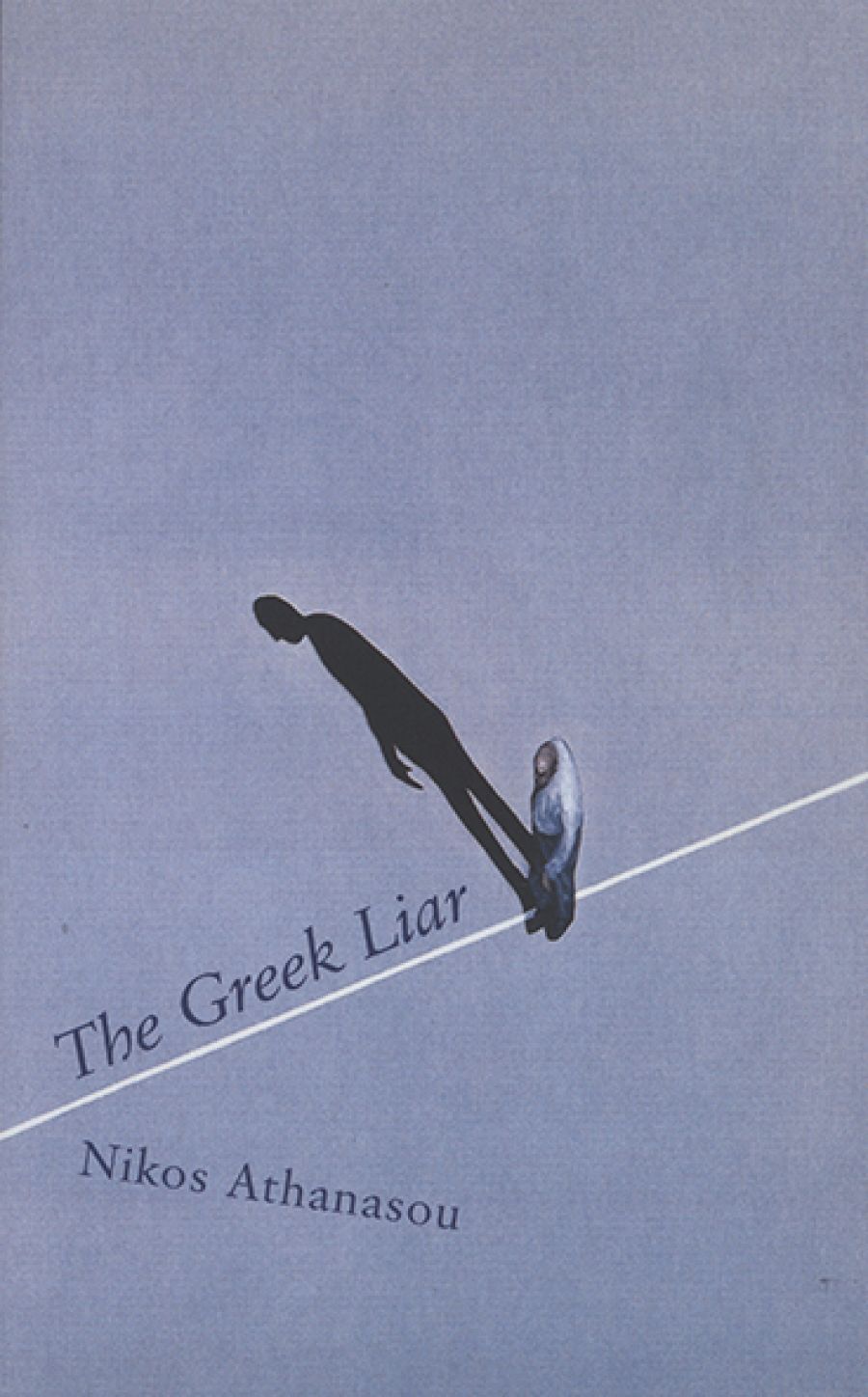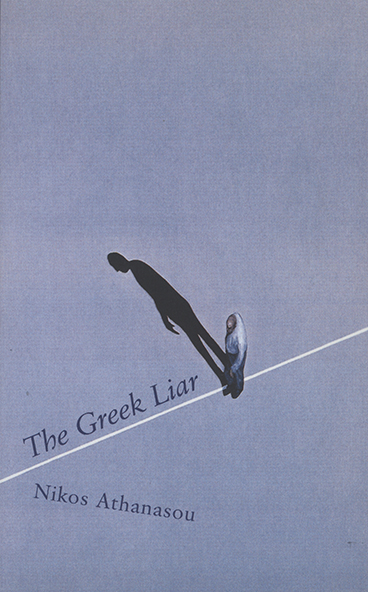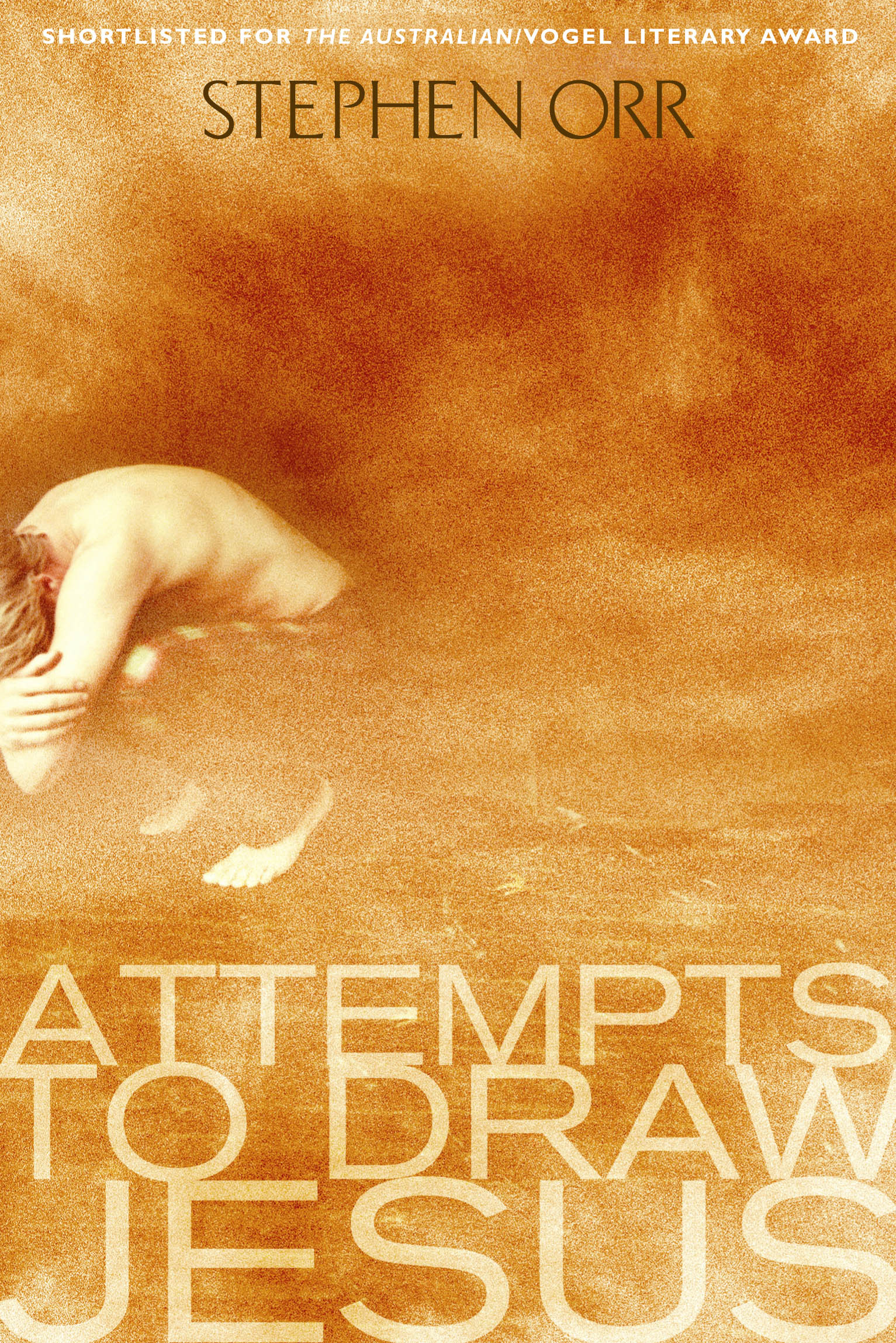
- Free Article: No
- Contents Category: Fiction
- Review Article: Yes
- Article Title: Playing the Game
- Online Only: No
- Custom Highlight Text:
Nobel prize winner Albert Camus played soccer for Algeria. First-time novelist Nikos Athanasou has been likened to Camus – for his writing, not his ball skills – but, on the basis of his début, this comparison is hard to sustain. A more convincing parallel between the two authors might lie in the diversity of their skills; Athanasou’s new career as a writer is secondary to his ‘day job’ as Professor of Orthopaedic Pathology at Oxford.
- Book 1 Title: The Greek Liar
- Book 1 Biblio: Brandl & Schlesinger, $26.95 pb, 222pp
- Book 1 Cover Small (400 x 600):

- Book 1 Cover (800 x 1200):

- Book 2 Title: Attempts to Draw Jesus
- Book 2 Biblio: Allen & Unwin, $19.95 pb, 372pp
- Book 2 Cover Small (400 x 600):

- Book 2 Cover (800 x 1200):

The Greek Liar opens as George Makris returns home to Sydney after a prolonged absence with ‘nothing really to show for all the time he had been away’. The stifling Greek-Australian community from which he ran awaits him on his return. To his considerable dismay, ‘nothing has changed’. George – not unhappy, but simply ‘not feeling quite right’ – is at odds with his family’s expectations for him. His mother is constantly distrustful and disappointed. His brother, who has embraced society’s traditions, both personally and professionally, is a reminder of George’s failures. As George re-establishes his life in Sydney, he begins to go through the motions of ‘normal behaviour’. He finds work at the hopeless, financially struggling B. Street High School, despite never having been ‘able to convince himself that the results [of teaching] justified the effort’. He forms a new relationship with a family friend, Belinda, which he pursues even though he is ‘frankly more interested in the latest rekindling of his own perished self than concerned about her’. Throughout, George is acutely aware of the dishonesty of his position. But Athanasou suggests that it is not George but the community at large that are the liars. George’s supposed strength is his ability to tell the truth, to identify the hollow hypocrisies of society and its rituals and traditions.
Athanasou writes well: the dynamic of the Makris family is drawn confidently and quickly; George’s inability to identify with the people around him is vivid and painful; the absurdity of staffroom politics at B. Street High provides a series of comic interludes. But, unfortunately, instead of the Camusian detachment that he appears to strive for, The Greek Liar is both unengaged and unengaging. One of the novel’s main problems is how little reason we are given to empathise with George. His identity crisis is unsatisfactorily presented; there is something laughable about his baldly stated fascination with his own ‘perished self’ and his ‘strong impression that [those around him] were acting out an elaborate morality play solely for his benefit’. His brand of self-importance renders him enormously unsympathetic. Athanasou is also overly fond of reported speech. Not only does this serve to further distance us from George, but it means that, when moments of dialogue do occur, characters’ speeches take on the appearance of all-important revelations and philosophical insights. They rarely deliver.
Given George’s anxiety about the emphasis placed on his elder brother’s achievements, it seems perversely unfair to compare Athanasou’s novel to the work of earlier novelists on similar subject matter. It is impossible, however, to read The Greek Liar’s account of rebellion in the face of Greek-Australian tradition without considering Christos Tsiolkas’s powerful first novel, Loaded. The comparison is not favourable for Athanasou. Unlike Loaded, where ethnicity, sexuality and youth were all offered up as possible means of self-identification, The Greek Liar offers only a blend of nihilism and solipsism. Athanasou does a good job of making the prospects facing George, and similarly the young students at B. Street High, seem unpalatable. What he does not do is adequately convey why George deserves more.
The absence of prospects facing young Australian men is also foremost in ex-teacher Stephen Orr’s first novel, Attempts to Draw Jesus, which was runner-up for the 2000 Australian/Vogel Award for an unpublished manuscript. It is easy to see the book’s appeal. Orr’s protagonists are younger than George Makris and have even fewer options at the end of their education. Jack Alber is a healthy product of his rural Australian upbringing. Jamestown, in northern South Australia, is not just the town in which he grew up but, as the patron’s board at the local memorial hall testifies, it is his parents’ and grandparents’ town.
The expectations and traditions outlined in The Greek Liar are equally prevalent in Jamestown. But, when laid off from the local service station, Jack needs to look further afield for opportunities. While he is obviously bright, his marks are inadequate for further studies other than a hairdressing or hospitality course at the local TAFE, which he declines as proof of failure. The city seems to be his only option. This bleak outlook is matched, however, by the predicament of Clive ‘Rolly’ Rollins in the city. Rolly, faced with the ‘human waste’ that he witnesses around him in Adelaide, is as fatalistic about his future as Jack. An advertisement for jackaroos ‘up north’ offers a means of escape and, with admirable efficacy, Orr has the two young men apply, befriend each other, and pursue new lives as jackaroos. In the outback, perhaps, meaning can be found for young Australian men.
Orr displays a deft and delicate imagination. He has a keen ear for dialogue and an affectionate appreciation of his subject matter. Attempts to Draw Jesus is based on a true story, the details of which shape the novel’s climax. Even without the reference to sources at the end of the book, the extent of Orr’s research would be immediately apparent. His descriptions of Jamestown are evocative, from the more mundane details, such as the roll-call of buildings on Main Street, to the bizarre origins of the Jamestown Surf Lifesaving Club. Similar attention is paid to the Adelaide lifestyle of Rolly’s mother. The talk-back radio host, King Bob, is a well-observed period character, particular to late-1980s Adelaide.
Attempts to Draw Jesus does not sustain these high standards throughout: at more than 360 pages, it is over-long. A tighter account of the boys’ time at Ningunna, the cattle station, might have helped, and a less heavy-handed approach to landscape and isolation would have been welcome. The religious undertones of the novel also sit uneasily. While Arthur, the failed priest who lives with Rolly’s mother, is one of the book’s more nuanced characters, Rolly’s fascination with the historical figure of Jesus and Jack’s epiphany in the desert both seem somewhat over-wrought. The characters at Ningunna are less confidently drawn than earlier ones. Too often, Orr resorts to the device of recounting their dreams, circling around the sleeping farmstead and penetrating their minds and motivations. Characters are reduced to archetypes at best, stereotypes at worst: the unhappy, misunderstood mail-order bride, the stoic chief farmhand and the rebellious daughter are insubstantially drawn, no matter how many internal monologues we are privy to. This is balanced by the boss’s son, Egg, whose model boats are as out of place in the Simpson Desert as a Surf Lifesaving club is in Jamestown. Egg’s hostility to Jack is juxtaposed with subtle reminders that, like our protagonists, he has been born into a context where he is unable to realise his potential and is forced instead to ‘play the game’.
Even when it loses its way, Orr’s début is compelling. While the hopelessness that drives Jack and Rolly into the outback permeates the novel, the warmth of their friendship and the enthusiasm with which they take control of their future is contagious. The book’s ending should pack a stronger emotional punch than it does, but the boys’ plight is still moving, and we are left with the sense that neither of them had many options to begin with.
Perhaps they should have become novelists. Or football players.


Comments powered by CComment